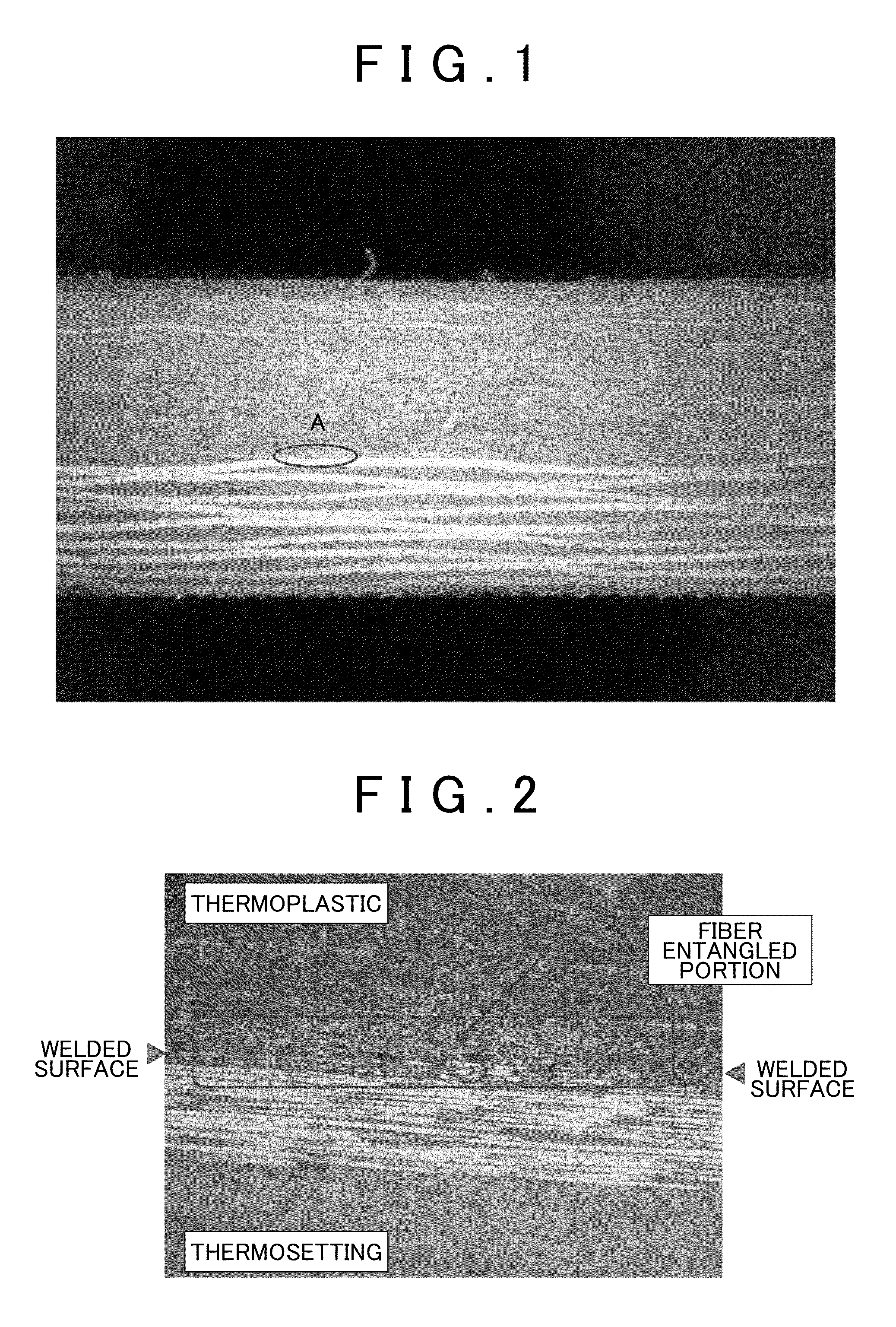Resin joined body, method of producing resin joined body, and vehicular structural body
- Summary
- Abstract
- Description
- Claims
- Application Information
AI Technical Summary
Benefits of technology
Problems solved by technology
Method used
Image
Examples
Embodiment Construction
[0021]Hereinafter, a resin joined body, a method of producing a resin joined body, and a vehicular structural body according to example embodiments will be described in detail.
[0022]First, a resin joined body and a method of producing the resin joined body will be described. The resin joined body of the present embodiment is obtained by joining a thermoplastic resin and a thermosetting resin cured material together by welding. The thermoplastic resin contains fibers. The thermosetting resin cured material has a melting temperature lower than a melting temperature of the thermoplastic resin, and contains fibers. In the resin joined body of the present embodiment, the thermoplastic resin containing the fibers and the thermosetting resin cured material containing the fibers are joined together by welding without using an adhesive or a fastener, such as a rivet. Thus, it is possible to prevent a mass increase that will occur due to the use of an adhesive or a fastener, such as a rivet, ...
PUM
| Property | Measurement | Unit |
|---|---|---|
| Melting point | aaaaa | aaaaa |
| Length | aaaaa | aaaaa |
| Length | aaaaa | aaaaa |
Abstract
Description
Claims
Application Information
 Login to View More
Login to View More - R&D
- Intellectual Property
- Life Sciences
- Materials
- Tech Scout
- Unparalleled Data Quality
- Higher Quality Content
- 60% Fewer Hallucinations
Browse by: Latest US Patents, China's latest patents, Technical Efficacy Thesaurus, Application Domain, Technology Topic, Popular Technical Reports.
© 2025 PatSnap. All rights reserved.Legal|Privacy policy|Modern Slavery Act Transparency Statement|Sitemap|About US| Contact US: help@patsnap.com

